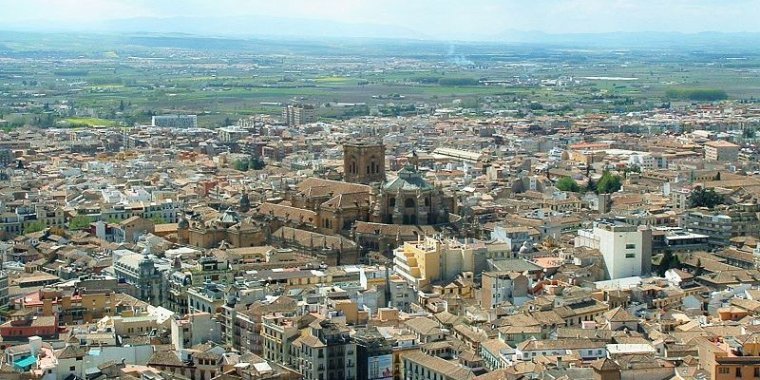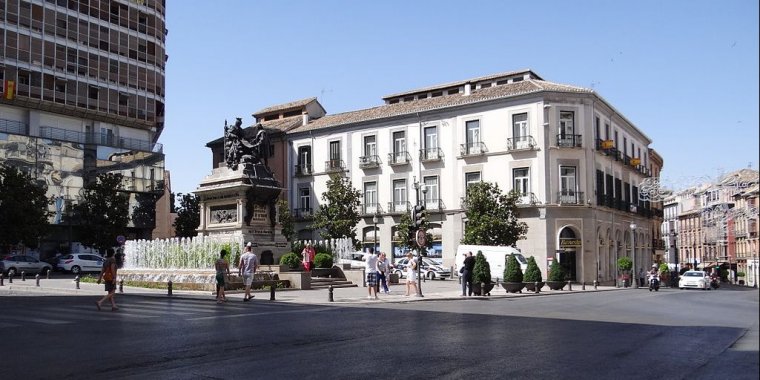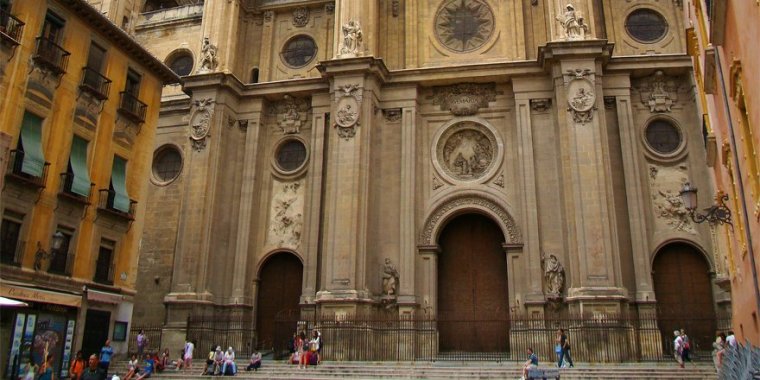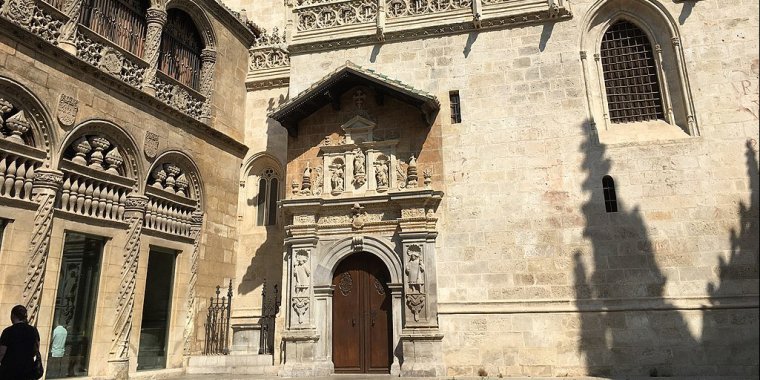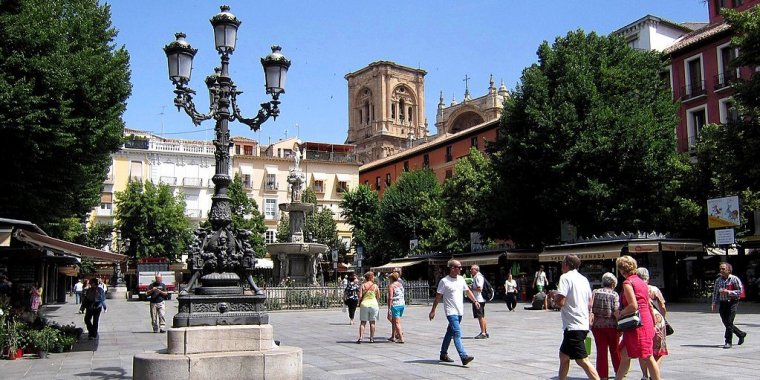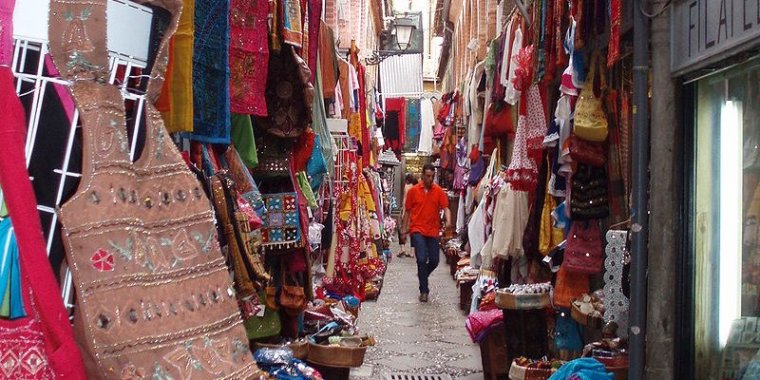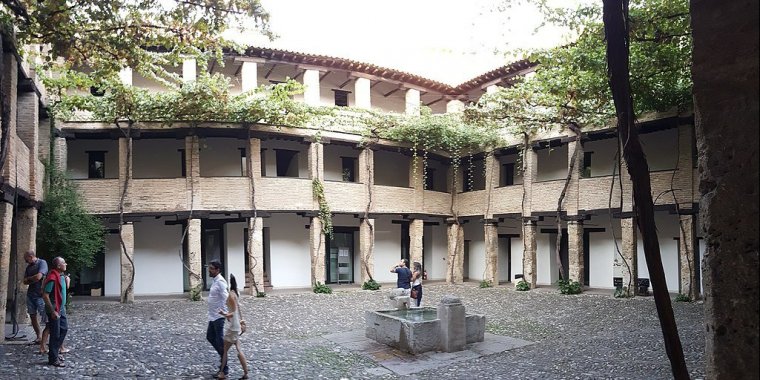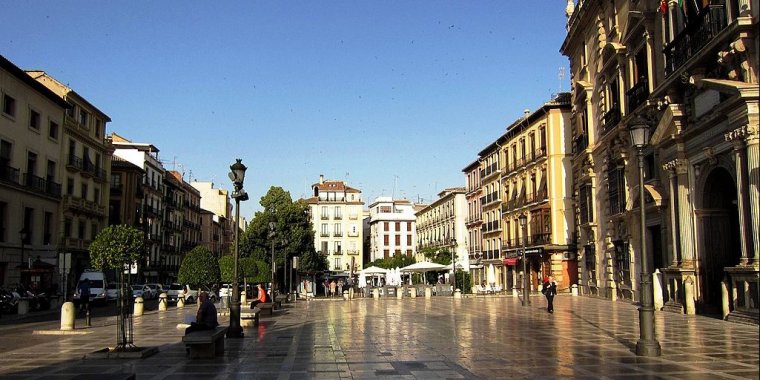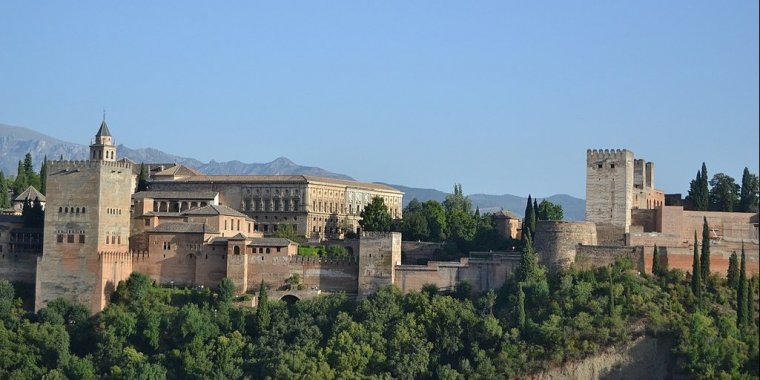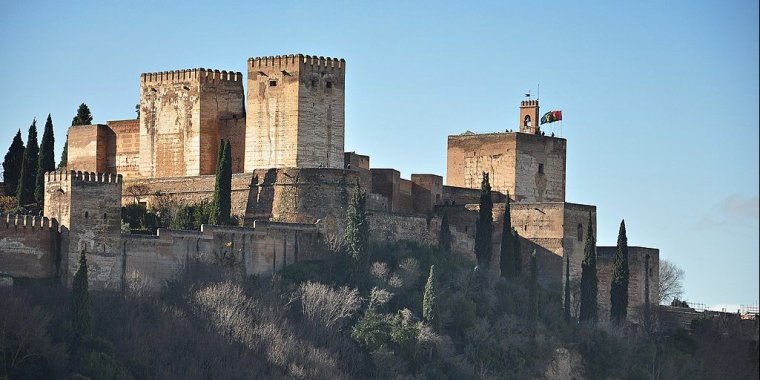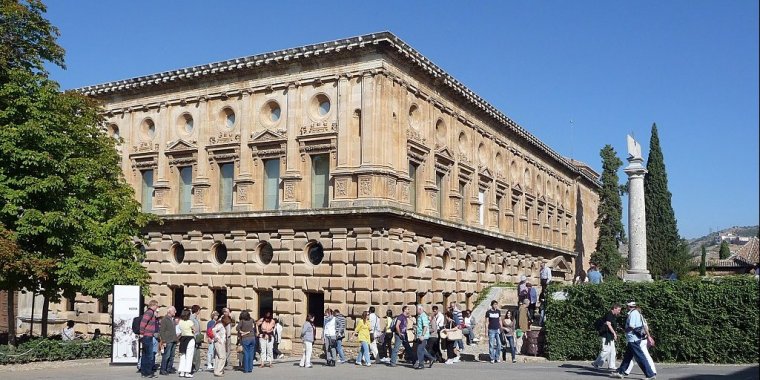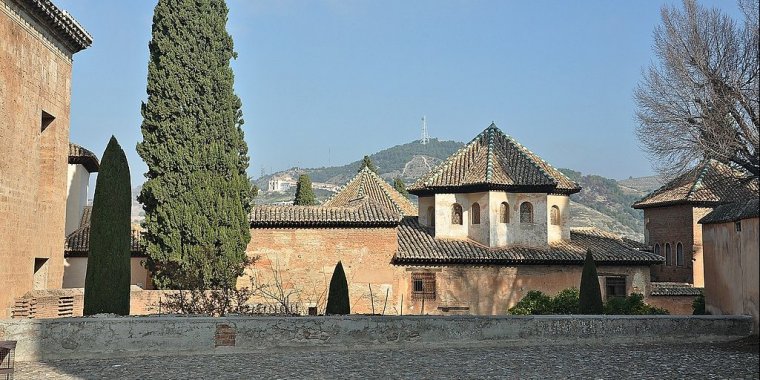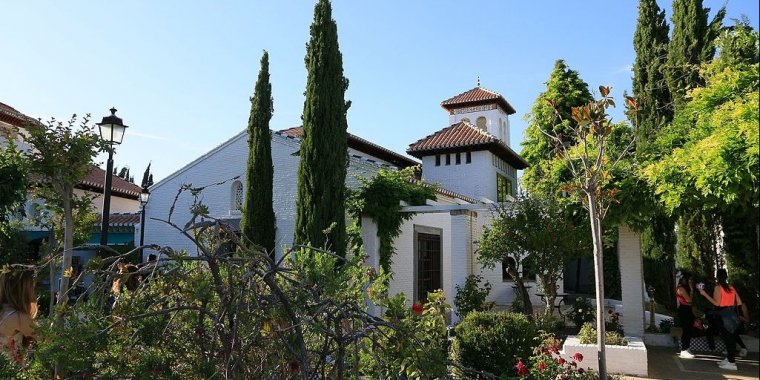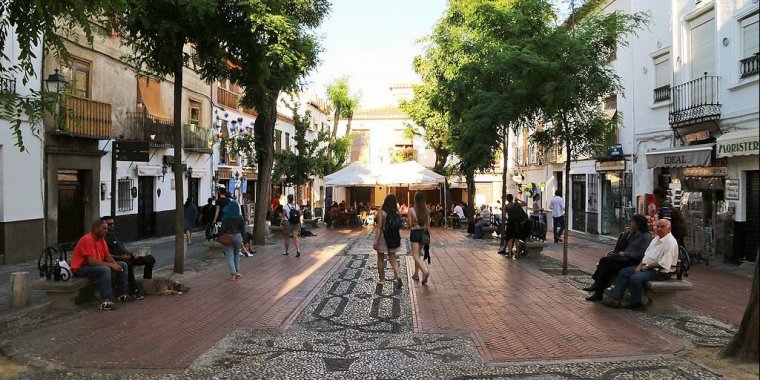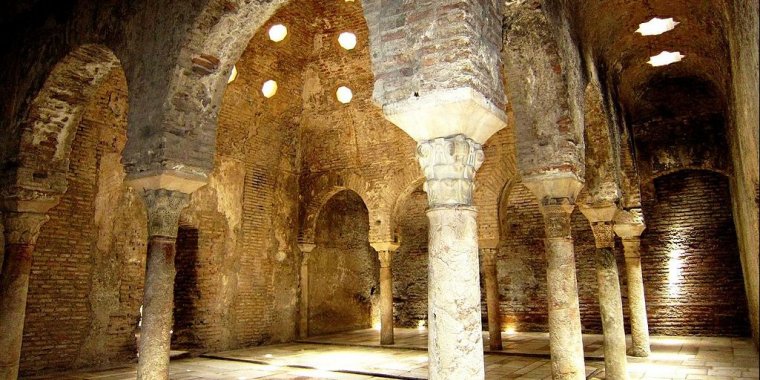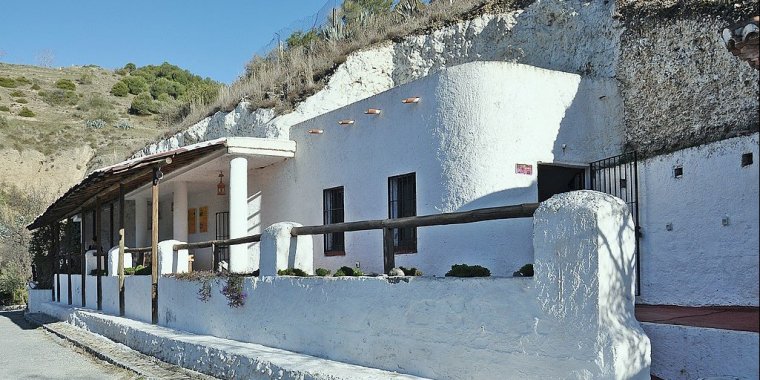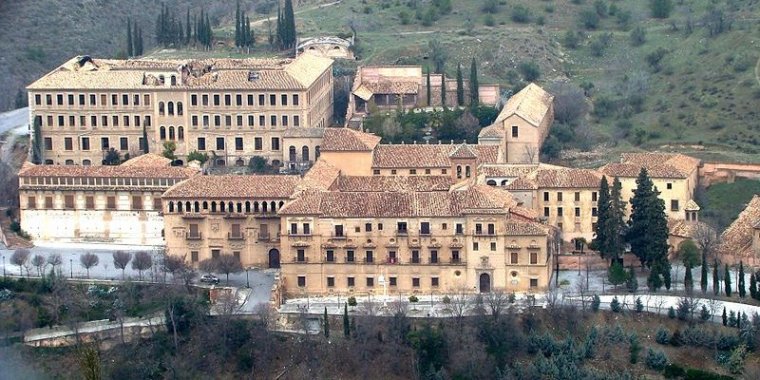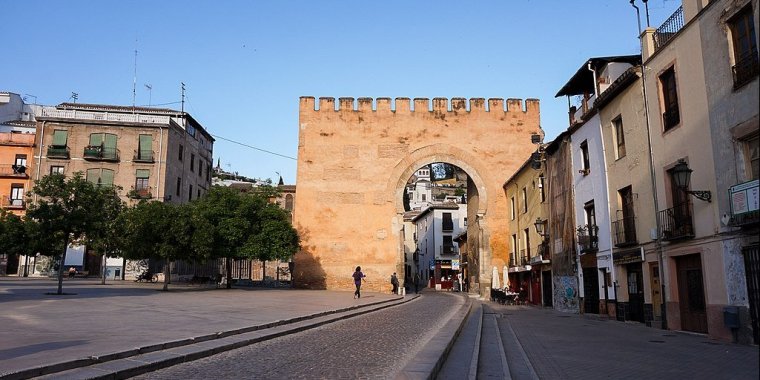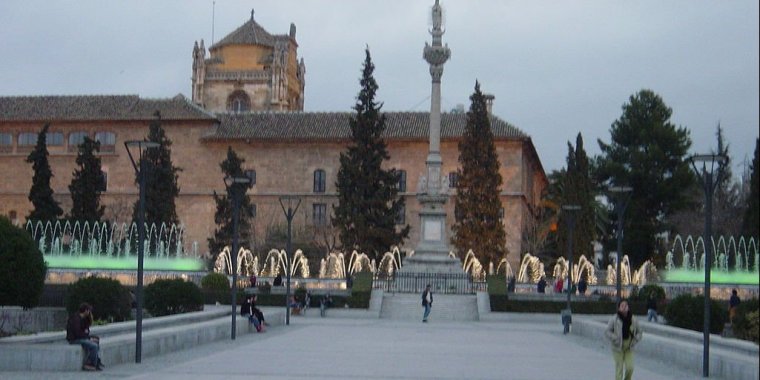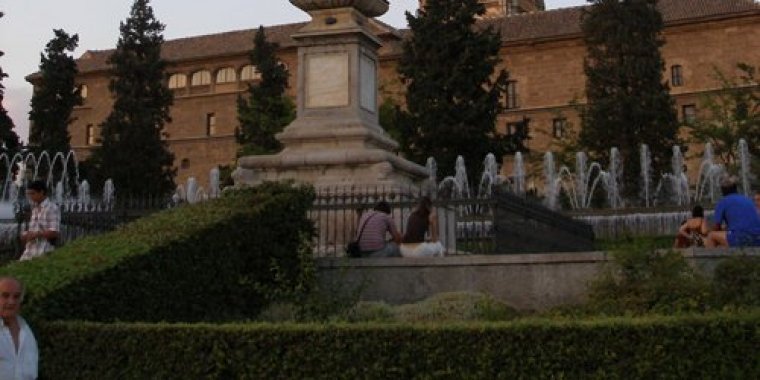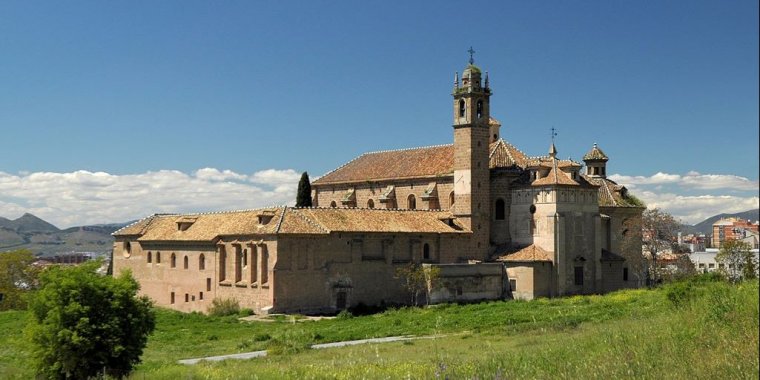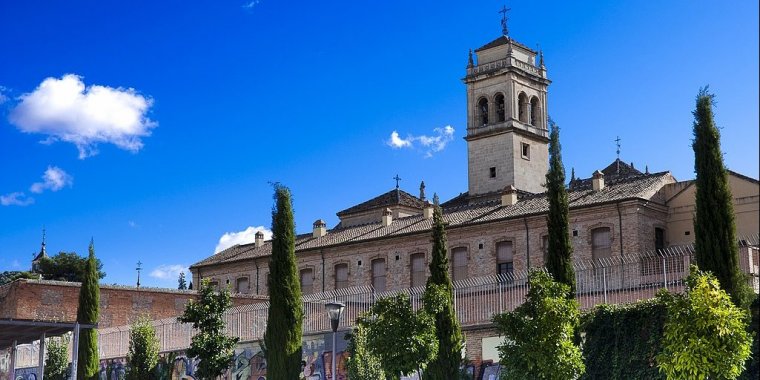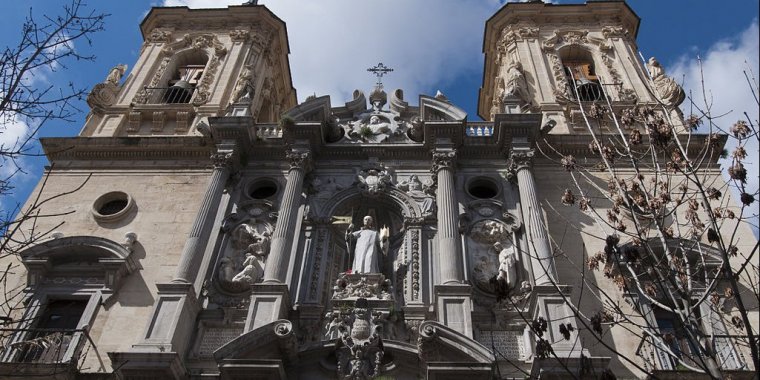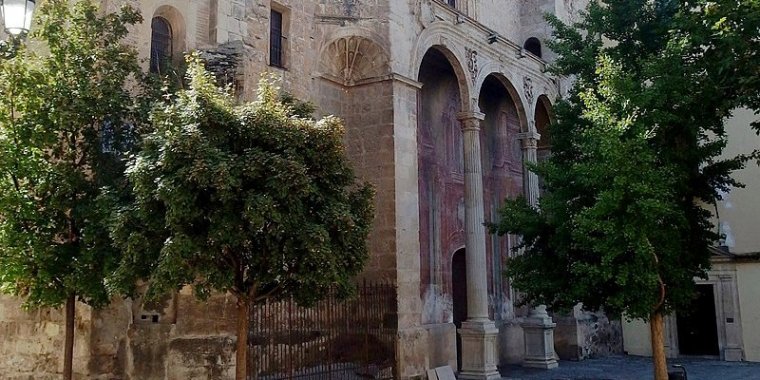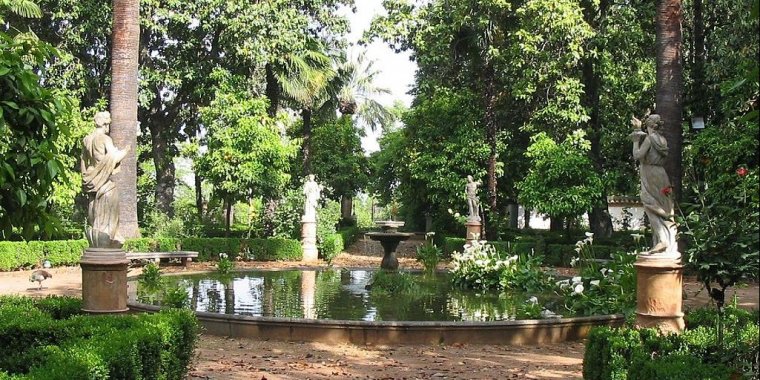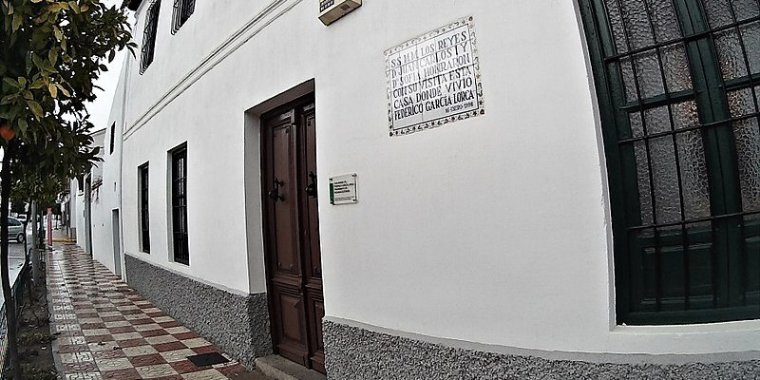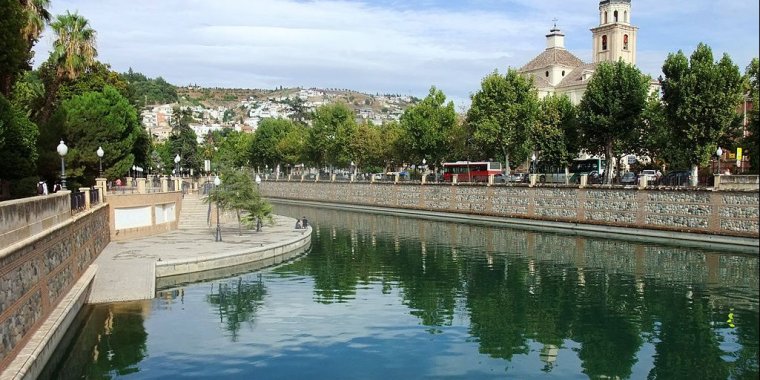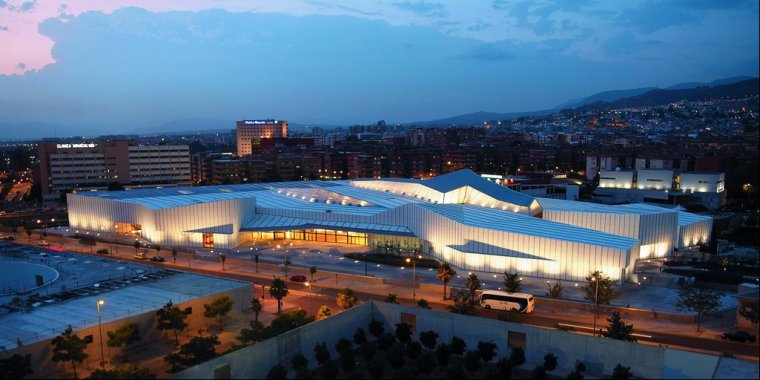| Published in Attractions / Places of Interest |
Tourist Attractions in Granada, Spain
In addition to a rich multicultural history, the Alhambra and other monuments, a student-driven nightlife, and skiing and trekking in the nearby Sierra Nevada, Granada offers a break from the summer heat of other Andalusian cities such as Córdoba or Seville.
Central Granada
Oriented around the intersection of Gran Via de Colon and Calle Reyes Catolicos, central Granada is the historic center and bustling heart of the city, with its many shops, restaurants, bars and attractions situated along narrow cobblestone and brick alleys or on the edge of one of the many serene plazas in the area. Walking through you're sure to take in the sights, smells and sounds of superb architecture, good food, and pleasant conversations among residents.
• Plaza Isabel la Catolica, at the intersection of Gran Via de Colon and Calle Reyes Catolicos. At the junction of Granada's two grand boulevards is this small square with a prominent statue of Columbus unfurling a contract with Queen Isabel, outlining the terms of their agreement in preparation for his first voyage to the Americas, an event which likely occurred in Granada. A pleasant fountain surrounds the statue and there are benches nearby, allowing you to relax and take in the passing crowds of vehicles and people.
• Cathedral of Granada (La Catedral de Granada), Gran Via de Colon 5 (enter from Gran Via just north of Plaza Isabel la Catolica; bus stop Gran Via 1). March–August: M-Sa 10:45-13:30 and 16:00-20:00, Su and holidays 16:00-20:00; September–February: M-Sa 10:45-13:30 and 16:00-19:00, Su 16:00-19:00. Towering over the surrounding blocks is this spectacular 16th century structure, the second-largest cathedral in Spain and noted for its bright Renaissance interior. Constructed after the Reconquista of Granada to replace the mosque on the site, the cathedral was laid out with Gothic foundations but built in the Renaissance style and decorated with Baroque elements.
Upon entering you'll be behind the main altar, located beneath the towering circular Capilla Mayor (sanctuary) with its magnificent domed ceiling. Surrounding the sanctuary and the pews are a series of chapels with magnificent artwork, and the sacristy (tucked away on your right immediately after entering) holds a collection of fine paintings, mirrors, and furnishings. Additionally, the spectacular façade of the cathedral (on the west side of the structure, opposite the Gran Via) is worth walking around outside to view - based on the design of a triumphal arch, it overshadows the small square below. €4.
• Royal Chapel (Capilla Real), c/ Oficios (enter from Calle Oficios, the small alley on the south side of the cathedral; bus stop Gran Via 1). Autumn-Winter: M-Sa 10:15-13.30 and 15:30-18:30, Su and holidays 11:00-13:30 and 15:30-18:30h; Spring-Summer: M-Sa 10:15-13:30 and 16:00-19:30, Su and holidays 11:00-13:30 and 16:00-19:30. Commissioned after the Reconquista of the city, the Royal Chapel holds the tombs of King Ferdinand II and Queen Isabella I, the famed Catholic Monarchs who conquered the city and decided to be buried at the site of their victory. The chapel was constructed in Gothic style but the intricate marble tombs are done in Renaissance style.
Additionally, Ferdinand and Isabella's heirs Juana I (Juana la Loca) and Philip I (Felipe el Hermoso) are buried here. Aside from the beautiful and intricate artwork in the chapel and high altar there is also a museum on-site with a number of objects symbolizing Ferdinand and Isabel's rule, including Isabella's art collection, crown and sceptre and Ferdinand's sword. €4.
• Plaza de Bib-Rambla, a block west of the Cathedral. A pleasant square with a view of the cathedral's tower, this plaza was originally the center of Moorish Granada, a bustling focus point of markets and festivals. Under Christian rule the square was expanded and used as a focal point of Catholic processions. Today the square is a quiet place to relax, enjoy a coffee or a meal, or take in the colorful flowers and bubbling fountain.
• Alcaiceria. South of the Cathedral is this set of winding alleyways which were originally home to a Moorish silk market under Granada's Muslim rule. Although the market initially survived the Reconquista, Philip II had it shut down and a fire destroyed what was left in 1850. Today's market was rebuilt in the late 19th century for tourists and holds mostly souvenir stores underneath the Moorish-style archways decorating the walls. While the wares are mostly tacky novelties, the architecture is worth a look.
• Corral del Carbón (from Calle Reyes Catolicos, head down the alley Puente del Carbon to the building with the pointed Moorish style arch at the end of the alley). Entrance viewable anytime, courtyard open M-F 9:00-19:00, Sa-Su 10:00-14:00. One of the rare bits of Moorish architecture left in the central district, this courtyard building is perhaps the oldest monument in Granada. Originally the building was used as a caravanserai - a place for merchants to rest and store goods - and was one of many surrounding the Alcaiceria. Later it was adapted for theater plays and today you can buy tickets for musical events here. Walk through the grand Moorish door and enjoy the brick-walled courtyard. Free.
• Plaza Nueva, Calle Reyes Catolicos (a block west of Plaza Isabel la Catolica; buses C1 and C2 stop at Plaza Nueva, or walk from the Gran Via 1 stop). Long an important center of life in Granada, Plaza Nueva is the city's oldest square, situated beneath the Alhambra and at the foot of the Albayzin, and today links these attractions with the newer parts of the city to the west. Surrounding the square is a multitude of bars and tapas restaurants (making the square the city's center for nightlife) as well as several important buildings such as the Royal Chancellery (Real Chancilleria), the House of Pisa (Casa de Los Pisa), and the Church of Santa Ana on the east side of the square, a 16th century church constructed in Mudejar style with a lovely tower.
• Museo San Juan de Dios, C/ Convalecencia 1 (just off Plaza Nueva). 10:00-13:30. A very rich religious art collection. €3.
• Centro José Guerrero (Museo José Guerrero), Calle Oficios 8, e-mail: centro.guerrero@dipgra.es. Tu-Sa 10:00-14:00 16:30-21:00, Su 10:30-14:00. A small museum dedicated to the Granada-born painter José Guerrero. The uppermost floor has a permanent collection of his abstract expressionist paintings, while the lower two floors show temporary exhibits of contemporary art and photography by Spanish and international artists. Free.
The Alhambra
• The Alhambra: Part fortress (the Alcazaba), part palace (Palacios Nazaries), part garden (the Generalife) and part government city (the Medina), this medieval complex overlooking Granada is one of the top attractions in Spain, with many visitors coming to Granada expressly to see the Alhambra. The last Moorish stronghold in Europe, the Alhambra reflects the splendor of Moorish civilization in Andalusia and offers the visitor splendid ornamental architecture, spectacular and lush gardens, cascading and dripping water features, and breathtaking views of the city. This impressive fortress complex is deservedly listed as a UNESCO World Heritage site.
The Alhambra was a palace, citadel, fortress, and the home of the Nasrid sultans, high government officials, servants of the court and elite soldiers from the 13th to the 14th century. Other notable buildings belonging to a different time period are also located within the Alhambra complex, most notably the Renaissance style Palace of Charles V, which houses the Alhambra Museum (with historical artifacts from the site) and the Fine Art Museum.
But in order to fully appreciate the unique architecture of the Alhambra set within the surrounding landscape, it is advisable to see the Alhambra for afar as well as up close: several locations in the Albaizín (most notably the San Nicolás Viewpoint) or Sacromonte - both covered below - allow you the opportunity to truly admire the Alhambra's spectacular location, lying just above the city of Granada.
The Alhambra is a vast complex, composed of many structures and gardens on its lush grounds, which alone are worth exploring - it is totally free to do so and they are open nearly all hours of the day - but there are four primary attractions: the Alcazaba, the Palace of Charles V, the Palacios Nazaries and the Generalife.
Official web site at www.alhambra-patronato.es where you can buy tickets online. Mar-Oct every day 8:30-22:00 plus F/Sa 22:00-23:30; Oct-Mar every day 8:30-18:00 plus F/Sa 20:00-21:30 (ticket office closes one hour before attraction, evening visits to Palacios Nazaries only). €14 combo ticket for Palacios Nazaries, Alcazaba and Generalife, €7 for just the Alcazaba and Generalife, €8 for an evening visit to the Palacios Nazaries, and €5 for an evening visit to the Generalife. Palace of Charles V free.
Reservations: It is highly recommend that you book tickets to the Alhambra in advance, as the number of visitors allowed inside the Palacios Nazaries is limited and tickets tend to sell out. These can be booked online, by phone, or in person at the main entrance to the Alhambra or at the Tienda de la Alhambra shop on Calle Reyes Católicos in the city centre. Note that the online and phone reservation services require a credit card (which you must bring with you to the Alhambra ticket office to pick up your tickets) and charge an extra 10% fee on top of the cost of admission.
Online tickets are usually sold out many days or even months in advance, but every day more tickets are put on sale and people also cancel their tickets - that means you can get an online ticket by checking the website daily. Several hundred tickets are reserved for sale on the day but these usually require arriving early and queuing for an hour or two. The "Granada Card" or "Doble de Oro General" can still be available after the regular tickets have sold out. Failing that, quite a lot of the grounds are accessible without a ticket. This general caution applies to cruise ship land tours (e.g., from Malaga); failure to book Alhambra tours early (before or during cruise) may mean no tours/"buses" are available.
Note that visiting hours are split into 3 periods: morning (before 14:00), afternoon (after 14:00 to first closing time), and evening (F/Sa only). Tickets are issued for a specific period and access to monuments will not be granted outside that period. However, once inside visitors may remain until closing time. In addition, the Palacios Nazaries can only be accessed for a half-hour time window (shown on the ticket) within your visiting period. As such, it's a good idea to plan your visit around these restrictions - for example, if you have a morning ticket (before 14:00) and your Palacios Nazaries ticket is for 13:00, get to the Alhambra grounds at least a couple of hours before your appointed timeslot for Palacios Nazaries and spend it touring the Alcazaba and Generalife.
Getting there: From central Granada, the C3 bus offers a direct connection to the Alhambra from Plaza Isabel La Catolica. There are three stops for the Alhambra: Generalife (closest to the ticket office), Carlos V (closest to the Palace of Charles V) and Puerta de la Justica - fare is €1.20. A taxi from the central district (head to the stand on Plaza Nueva) will cost you around €6. On foot, you can walk up to the Alhambra from Plaza Nueva (about a 30-minute hike) by taking Cuesta de Gomerez and heading straight - the ticket office is on the far side of the grounds, near the Generalife. If coming by car from outside the city, you can bypass the historic district by taking the Ronda Sur-Alhambra exit (A-395) from the freeway and following the signs to the parking lot (€1.75/hour).
— Alcazaba. The ruins of a massive fortress perched atop the crest of the hill overlooking the city, this is the oldest part of the Alhambra and offers some of the finest views of anywhere in the complex, with an expansive panorama from the top of the prominent tower that gives you a spectacular view of nearly the entire city and the Sierra Nevada mountains. Within the fort's walls are the ruins of a town which once held soldier's homes and baths, though today only the outline of these rooms remain.
— Palace of Charles V (Palacio de Carlos V). A more recent addition to the Alhambra, this sixteenth century building was commissioned following the Reconquista by Charles V as a royal residence close to the Alhambra palace. The square two-level structure is done in Renaissance style with an impressive circular courtyard ringed by a colonnade within. The building is also home to two museums, the Museo de la Alhambra on the lower floor with a collection of artifacts and art from the Alhambra, and the Museo de Bellas Artes, a small fine art museum on the upper floor, as well as a couple of changing museum exhibits which regularly feature art with some connection to the Alhambra.
— Palacios Nazaries. The Nasrid royal palace and the primary (and thus most crowded) attraction of the Alhambra complex, the palace is an impressive, at times breathtakingly beautiful work of architecture. Visitors get to see spectacular archways and windows, carved wooden ceilings, intricate molded-plaster work and colorful ceramic tiles at nearly every turn as they meander between lovely rooms and lush courtyards. Everyone starts their tour in the Mexuar, a set of administrative rooms with a beautiful prayer room and a small square courtyard with the golden Façade of Comares, before emerging in the Court of the Myrtles, a rectangular courtyard with a long pool of water flanked on each side by a myrtle hedge (hence the name). At the end of the courtyard you can enter a room to view the twelve Lion Statues from the fountain in the Court of the Lions, which is undergoing renovation.
Cross to the other end of the Court of the Myrtles to enter the Ship Room, with its spectacular carved wooden ceiling in the shape of an upside-down hull, and the Chamber of the Ambassadors, the palace's largest and perhaps most spectacular room, which once functioned as the throne room and features a star-studded wooden ceiling, intricately carved stucco walls and beautiful arched windows. From here you'll pass through a series of small rooms, including the Washington Irving Room, where Washington Irving wrote Tales of the Alhambra, as well as down an open-air hallway with an excellent view of an adjacent courtyard (the Court of Linda-Raja) and the Albayzín.
Passing by the old bath house you'll enter the Hall of the Two Sisters, a spectacular domed room with an intricate stucco ceiling and lovely views of the Court of Linda-Raja. From here you can navigate around the edge of the Court of the Lions (under renovation) to the Hall of the Abencerrages, structurally similar to the Hall of the Two Sisters. At this point you can exit the palace, which will place you near the entrance to the Partal Gardens.
— Generalife. The lush and gorgeous gardens of the Nasrid kings, the expansive Generalife is the finest set of Moorish style gardens in Andalusia, positioned on a hill situated at the rear of the complex overlooking the Alhambra palace. Within you'll find beds of colorful flowers, more exquisite architecture, leaping fountains and cool shade. There are two entrances to the Generalife, one at the ticket booth on the east side of the complex and another next to the Palacios Nazaries which will take you through the Partal Gardens, a collection of palace gardens with flowing water streams and a large pool of water which reflects a nearby portico. From the Partal you can follow the Promenade of The Towers, the remains of the main wall and its adjoining towers that separate the Alhambra palace grounds from the Generalife. As you cross a bridge over a small canyon you'll enter the Generalife proper, where you can follow a promenade past the amphitheater to the Lower Gardens, a collection of hedge rows with rectangular ponds at the center and colorful flower beds throughout.
Past this is the Generalife Palace, the white structure sitting atop the hill and the highlight of a visit to the gardens, for it is within that you will find spectacular views, lovely architecture, and the much-photographed Court of the Main Canal, with its crossing jets of water that arc over the rectangular pool. Nearby is the Soultana's Court, another picturesque courtyard with leaping fountains. Above the palace are the High Gardens, where you can find a gorgeous long pergola and the Water Stairway, which true to its name is a beautiful stairway with water flowing down its parapets. The gardens are huge, but the layout is simple as everything in the Generalife can be seen along a long, circular path.
These are the four primary attractions, but the grounds hold many secondary sights as well, some of them quite splendid in their own right and many off the beaten path. If entering the Alhambra on foot from Plaza Nueva, you'll travel up Cuesta de Gomerez through the Granada Gate, an ornamental archway which marks the entrance to the grounds. From here you can continue straight into the Bosque (forest), a delightfully lush and shady wooded area in the canyon beneath the palace complex with streams running along the footpaths, fountains and statues and, in the summertime, fragrant smells from the trees.
If you take the rightmost path up the hill and make a right up the next path you find, you'll come across the Bermejas Towers, an outpost of the Alhambra on the very edge of the complex, with massive square towers perched on a hill over the neighborhood of Realejo. The towers themselves are locked up and mostly in ruins, but the views of Granada and the Alhambra are splendid. If you take the leftmost path from the Granada Gate you'll travel up to the Justice Gate (Puerta de Justica), an imposing Moorish-style archway and entry that served as the primary entrance to the palace complex in days of old.
Within the main palace complex, just above the Justice Gate is a lovely courtyard area, the Square of the Cisterns (Plaza de los Aljibes) between the Alcazaba and the Palace of Charles V next to the Wine Gate (Puerta del Vino), another picturesque horseshoe-shaped archway which once protected the grounds. Continuing along the small road past the Palace of Charles V to the upper part of the palace complex, you'll come across a line of woodworking and souvenir shops, the prominent St. Mary Church, the ruins of a village and the Parador. Though most of the Parador is a restaurant and hotel, parts are still open to the public, including the lovely courtyard entryway and the ruins of a Franciscan monastery, which holds the lovely remains of a small chapel with a view into the hotel's lavish patio area.
Above the main palace complex, to the east of the Generalife, are a number of visitor facilities, namely a large parking lot. A short hike uphill from the parking lot is the Silla del Moro, the ruins of a guard outpost directly above the Generalife Palace. While it requires an uphill hike and is isolated from the rest of the grounds, the Silla offers what may be the most spectacular view in all of Granada, giving you a rare opportunity to look down at the Alhambra palace, as well as a sweeping vista of the city, the valley and the surrounding mountains, with the added benefit of not being nearly as crowded as the San Nicolas Viewpoint in the Albayzín or requiring admission like the Alcazaba.
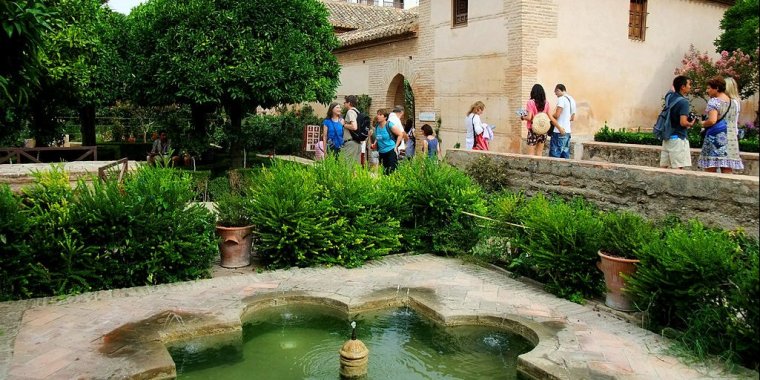
Garden of Generalife, summer palace of the Sultan of Granada. ![]()
Albayzín
Situated on a hill above the center of town and across from the Alhambra, the Albayzín (also spelled Albaicín, Alayzín, and Albaycín) is an ancient Muslim neighborhood popular with visitors - and rightly so. Among its narrow, winding streets one will find beautiful white-washed old buildings, splendid Arabic shops and restaurants, scenic gardens, and marvelous views of Granada and the Alhambra. Today part of a UNESCO World Heritage site (along with the nearby neighborhood of Sacromonte and the Alhambra, covered below), Albayzín dates back to the fourteenth century and was built as a defensive town and thrived as one of the centers of Granada under Muslim rule.
Entering the Albayzín is simple enough - from Plaza Nueva it's just a matter of walking north (uphill), or proceeding east along the Rio Darro (to the Paseo de los Tristes, covered below) and turning north on any of the side streets. However, if coming from the Cathedral or anywhere else in central Granada, the best entrance is via Calle Calderería Nueva (near bus stop Gran Vía 1), a stepped cobblestone street lined with Arabic restaurants, tea shops, bakeries and shops selling imported goods from North Africa.
However once inside the Albayzín you'll find the layout of the streets very confusing, with many steep sections and stairways - though this is indeed part of the charm of the neighborhood, always with a new path to explore or a hidden surprise waiting to be discovered. However, if the climb or the confusing layout sound like too much, you can also take the C1 minibus to the top of the hill from Plaza Nueva.
• San José Church (Iglesia de San José), C/. Cementerio de San José, 2. Open for masses - winter: M-F and eves of festivals 18:30, Su and festivals 11:00; summer: M-F and eves of festivals 19:00, Su and festivals 11:00. Located in a spot previously occupied by the Almorabitín, or mosque of morabites, and is one of oldest churches in Granada, dating back to the sixteenth century. The architecture of the old mosque is still visible in parts, particularly in the minaret-turned-bell tower.
• San Nicolas Viewpoint (Mirador de San Nicolas), Plaza San Nicolas (from the church at the end of Calle Caldereria Nueva, climb the path leading to the left and keep following the stairs uphill - eventually you will reach Camino Nueva de San Nicolas; at this point turn right and follow the cobblestone street uphill (at one point the road will fork - take the left route) until you reach the viewpoint; or take minibus C1 to Plaza S. Nicolas stop). Always open. The most popular attraction in the Albayzin for tourists, this spot offers a spectacular view of the Alhambra and the mountains behind, as well as excellent vistas of the city and up the Rio Darro canyon. Free.
• Mosque of Granada (Mezquita Mayor de Granada) (just off Plaza San Nicolas). Following the Reconquista, Islam was banished from Spain and its practitioners were persecuted, effectively stomping out any practice of the religion in Spain for centuries thereafter. But in recent years Islam has been making a comeback in Spain and this mosque, built in 2003, now stands as a link with the Muslim Granada of old.
The mosque maintains an open-door policy and while you need to arrange an appointment to see the main prayer spaces, you are free to enter the fragrant garden and take in the architecture of the rather humble yet beautiful building. Even if you have little interest in Islam the place is still worth visiting for the garden's marvelous view of the Alhambra and for the sight of Moorish-style architecture that's newly constructed rather than ancient and crumbling. Free.
• Plaza Larga, Cuesta de Alhacaba and Calle del Agua del Albaicin. A small and shady plaza, this is the center of Albayzín for its residents, removed from the tourist crowds of the San Nicolas Viewpoint, surrounded by local shops and restaurants and home to a local market on Saturday mornings. On the west edge of the plaza, tucked around a corner, is Puerta Nueva, a passageway to Placeta de las Minas situated at the end of a remaining section of defensive wall which once protected the Albayzín. The wall itself is mostly inaccessible, but excellent views of the wall, which really speak to how imposing it must have looked from the outside, are available from the Mirador de San Cristobal uphill from Plaza Larga (alternatively you can just walk along Cuesta de Alhacaba west from Plaza Larga from excellent views from beneath the wall).
Below the Albayzin is Carrera del Darro, a narrow street winding from Plaza Nueva along the meandering Rio Darro. This is one of the most scenic walks in Granada, packed with pedestrians strolling the cobblestone way, who have to squeeze to the side every few minutes as a taxi or a minibus passes by. Old shops, apartments, and other buildings cluster up the hill in the Albayzin on one side, and across the Rio Darro along the other side is the steep hill upon which is the Alhambra. Along the street are beautifully preserved buildings, remains of Arab houses, stone bridges crossing the Rio Darro, and plenty of nice restaurants.
• Hamman El Bañuelo, Carrera del Darro 31 (immediately across the street from the Bañuelo bus stop, routes C1 and C2). Tu-Sa 10:00-14:00. An unassuming-looking building from the outside, the Bañuelo is the ruins of perhaps the most well-preserved Arabic bath house in Spain. Once a popular socializing spot during Muslim Granada, most of the bath houses in the city were destroyed followed the Reconquista - this one survived due to the construction of a private home above. Inside you can view the beautiful architecture and learn how the bath house functioned, with its hot and cooling rooms and scenic courtyard. Free.
• Paseo de los Tristes, at the end of Carrera del Darro (bus stop Paseo de los Tristes, routes C1 and C2). Perched above the Rio Darro at the end of Carrera del Darro, this plaza was once on the busiest gathering spots in Granada, positioned along a curve of the river between the Alhambra and the Albayzin. Today it is a popular place to eat owing to the restaurants lining the north side of the square and the magnificent views of the Alhambra palace it offers.
Sacromonte
Locals often consider the Albayzín a world away from the rest of Granada, but even the Arabic quarter can't hold a candle to the relative isolation and uniqueness of Sacromonte, a gypsy (Roma) district situated east of the Albazin, demarcated by the road Cuesta Chapiz. The neighborhood is noted for its many cave dwellings built within the sides of the hill poking out here and there between the scrubby bushes and cacti. The district is also famous for its flamenco shows popular with tourists and the amazing views of the Alhambra.
To get to the neighborhood, you can walk or take the C2 minibuses up Carrera del Darro to Paseo de los Tristes. From there walk up Cuesta Chapiz until you reach Peso de Harina (where you'll find a small plaza with a statue of a man with a strange hat, Chorrojumo, who was regarded as the king of the gypsies). From there walk along the Camino del Sacromonte.
• Museo Cuevas Sacromonte, Barranco de los Negros. Summer: Daily 10:00-14:00 and 17:00-20:00; Winter: Daily 10:00-14:00 and 16:00-19:00. This museum offers the chance to get to know this neighborhood, with geological and historical exhibits on the caves, the biology, the people and the form of living as well as the traditional handicrafts of the locals. €5.
• Sacromonte Abbey. Founded in the seventeenth century. Local legend says that the catacombs under the church are where the city's first bishop (and today Granada's saint) San Cecilio underwent his martyrdom.
North Granada
Stretching north of central Granada, the north side of town encompass a set of newer neighborhoods with wide boulevards, modern and grand classically-designed buildings and lovely urban parks. This section of town is defined to a great degree by the presence of the local university (Universidad de Granada), government buildings, and two of the main points of entry into Granada - the train station and the bus depot.
• Elvira's Gate (Puerta de Elvira), Plaza del Triunfo. Once the principal gate to the old city, Elvira's Gate now stands on the edge of a plaza, a grand Moorish-style archway over a local street.
• Hospital Real, Av. del Hospicio (Av. del Hospicio and Calle Ancha de Capuchinos). M-F 9:00-14:00. Commissioned in 1504 by Isabel and Ferdinand, this massive square red-brick building was originally used as a hospital for the poor and soldiers who had been injured in the Reconquista of Granada. Situated on a hill over a nearby park, the structure now belongs to the University and is worth looking inside for its splendid architecture. Free.
• Triunfo Gardens (Fuente del Triunfo), Avenida de La Constitucion (between Av. Divina Pastora and Av. Del Hospicio). A beautiful urban park situated beneath the Hospital Real, the gardens hold a large fountain and an isolated column with a monument to the Virgin at the center overlooking the Avenida de La Constitucion. Evening is the best time to come, when the fountains are lit and the backdrop with the illuminated Hospital Real is most dramatic. Free.
• Cartuja Monastery (Monasterio de La Cartuja), Paseo de Cartuja (buses 8, C and U, Ciencias de la Educacion stop). Winter: Daily 10:00-13:00 and 15:00-18:00; Summer: Daily 10:00-13:00 and 16:00-20:00. A spectacular example of Baroque-style architecture, this monastery was commissioned in the 16th century but construction was interrupted and not completed until over three centuries later. Upon entering you'll pass through a cloister garden that serves as the building's tranquil courtyard, with small rooms splitting off from here, many with grisly paintings of martyrs meeting their fates. The single-nave church is spectacular and lavishly decorated, with the sanctuary and sacristy containing many beautifully crafted and intricate artworks. €3.50.
• San Jeronimo Monastery (Monasterio San Jeronimo), Calle Rector Lopez Argueta 9 (bus C6, Fuentenueva stop). Summer: Daily 10:00-13:30 and 16:00-19:30; Winter: M-Sa 10:00-13:30 and 15:00-18:30. The first monastery to be built in the city after the reconquest by the Christians, this monastery is noted for its picturesque courtyards, the Spanish Baroque-style sacristy and the splendid artwork on display. €4.
• Basilica San Juan de Dios, Calle San Juan de Dios 15 (from bus stop Avenida Constitucion 1, walk down Calle San Juan de Dios). M–Sa 10–13 and 16–19, Su 16–19. A gorgeous example of the Baroque granadino style with an over-the-top interior—not an inch isn't lavishly decorated. The basilica is also the final resting place of many of Granada's saints: ask permission to climb the stairs to the room behind the main altar where 190 bones and other relics are displayed. €4 which includes audioguide.
South Granada
Defined by its proximity to the Rio Genil, the main river through Granada, the south side of town is an interesting mix of old and new. To the east, on the foothills beneath the Alhambra, sits Realejo, once the Jewish district under Muslim Granada and now a sleepy neighborhood with many scenic villas and gardens among its narrow streets. To the west, closer to the center of town, lies bustling Puerta Real. Surrounding the intersection of Calle Reyes Catolicos, Calle Recogidas and Acera Del Darro, Puerta Real is the center of modern Granada, a district of grand classical and modern buildings and the city's primary shopping destination. South of the river is a modern section of town with many apartment highrises and office buildings.
• Santo Domingo Church (Iglesia de Santo Domingo), Plaza de Santo Domingo (in Realejo; take minibus C3 to Santo Domingo stop). Hours of worship: M-Sa 8:30-9:30 and 19:30-20:30, Su 9:30-14:00. Founded in 1512 by the Catholic Kings, this beautiful church sports a handsome stone portico entrance with a lovely painting and sculptures beneath an impressive bell tower. Inside, the high ceilings and domed sanctuary are spectacular and the chapels feature intricate artwork. Free.
• Carmen de los Mártires, Paseo de los Mártires (entrance is at the end of Paseo de los Mártires; take minibuses C3 or C4 to C.C. Manuel de Falla stop). Summer: M-F 10:00-14:00 and 17:00-19:00, Sa-Su and holidays 10:00-19:00; Winter: M-F 10:00-14:00 and 16:00-18:00, Sa-Su and holidays 10:00-18:00. An absolutely beautiful set of gardens near the Alhambra, this place is well worth a side trip if you have an hour or two to spare. The gardens date to the nineteenth century and have a blend of Moorish-style elements such as amble shade, decorative arches and bubbling fountains with English and French romantic style elements - one garden has an ornamental duck pond complete with statues, grottoes and follies (keep an eye out for the peacocks that wander the gardens). In addition, the views of Granada and the Alhambra from the terraces are absolutely marvelous. Free.
• Federico García Lorca Museum (Huerta de San Vicente), Virgen Blanca s/n (a block west of Camino de Ronda; buses 5, 10, 11, 21 and 22, stop C. Ronda 4). Museum: October–March, Tu-Su 10:00-12:30 and 16:00-18:30; April–May and June–September Tu-Su 10:00-12:30 and 17:00-19:30; July–August Tu-Su 10:00-14:30. Park: daily 8:00-1:00. On the outskirts of town is this charming house that was once the summer home of poet Federico Garcia Lorca. The house-turned-museum holds the original furnishings from when he lived here in the 1920s and 30s and is pleasant enough, but the real attraction here is the splendid public park that surrounds the house that was once the family's private estate. Within the park you'll find tree-lined pathways, streams of water, a duck pond, a large rose garden, and a children's playground. Museum €3, Park free.
• Basilica Nuestra Señora de Las Angustias, C/ Carrera del Genil (on C/ Carrera de la Virgen near Puerta Real). Open during hours of worship. The temple to Granada's patron saint, this seventeenth century church has a richly decorated interior and is a center for local Catholic processions. The evening mass held here is one of the most heavily attended in the city and is one of the best opportunities to experience the city's religious heritage firsthand. Free.
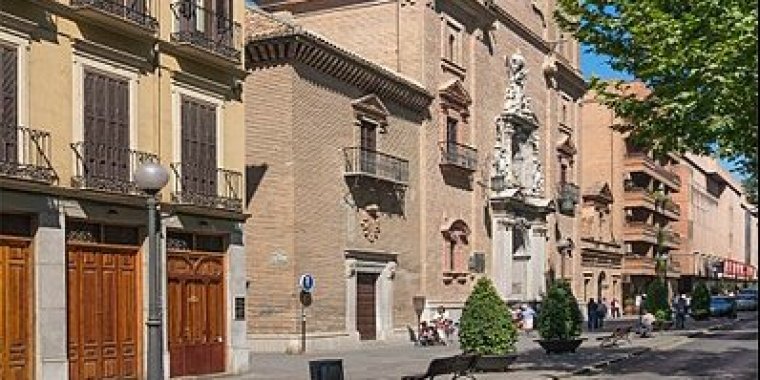
Basilica Nuestra Señora de Las Angustias. ![]()
• Rio Genil. While the river itself, which is essentially a large canal, isn't much to look at, there is a nice tree-lined promenade running alongside the river from Acera Del Darro along Paseo del Salon with some very pleasant gardens. From here a pleasant trail follows the river south out of the city into the Sierra Nevada mountains.
• Parque de las Ciencias (Science Park), Avd. de la Ciencias s/n (take buses 1 or 5 to Parque de las Ciencias stop). Tu-Sa 10:00-19:00, Su and holidays 10:00-15:00. Four different exhibition areas with lots to see, so make good use of the 2-day ticket. Bird show every day, but take note of timing. The Al-Andalus and Science Pavilion is a major highlight, featuring unique technology brought here by the Arabs, particularly in the fields of astronomy and architecture. 6€ general, 5€ seniors and children. (Wikivoyage)
See also Granada in Pictures.
YOU MAY ALSO LIKE






 If you own or manage a travel-related business such as a hotel, a bed-and-breakfast, a restaurant, a pub or a cafeteria, you can create a web page for your business for free on Titi Tudorancea Travel Info. » |
